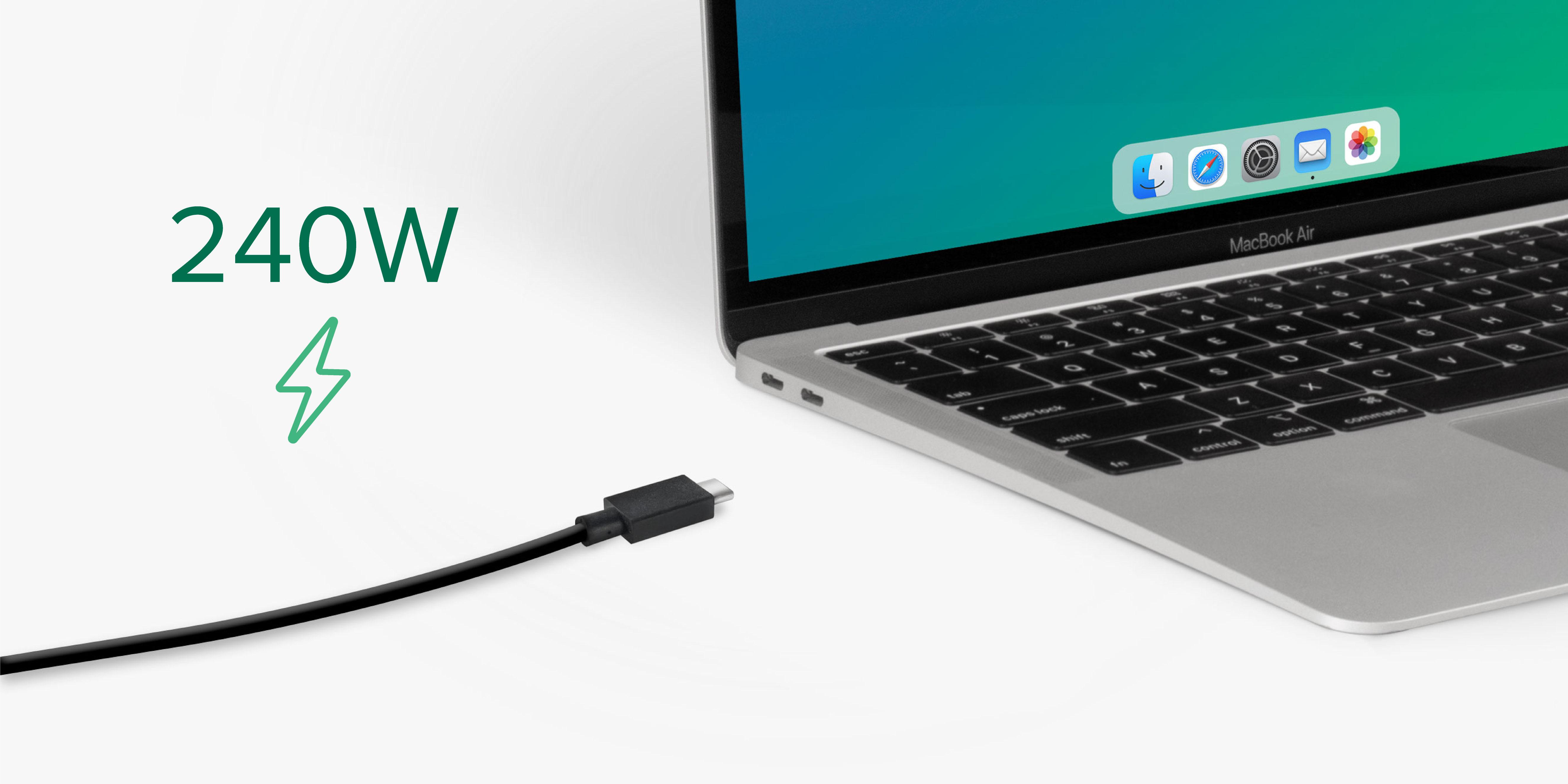The Quick Answer
The new USB Power Delivery specifications allow for the delivery of up to 240W via a USB Type-C cable (an increase from the previous 100W max). The previous Power Delivery range has been relabeled as Standard Power Range (SPR), and the new specifications (between 100W and 240W), have been labeled as Extended Power Range (EPR).
What to Expect
With up to 240W available, you can expect to power gaming-focused laptops through a single USB Type-C connection, as well as provide additional power to other downstream USB devices.
This will also allow you to transport your All-in-One laptop solutions without the original hefty power adapter, and still be able to conveniently charge your devices.
Additional Background
The USB-IF released their new USB specifications at the USB Developer Days conference in Seattle. Attended by Plugable team members and other industry professionals, we were able to receive first-hand feedback from the USB-IF regarding how and why the new specifications were designed.
Technical Specifications:
Extended Power Range (EPR)
- Support for up to 240W of power (28V, 36V, and 48V at 5A)
- EPR power negotiation is similar to today’s USB Power Delivery (PD)
- Same sequence flow of offer, Request and Accept/Reject
- Same requirement for sinks (a device that consumes power) to evaluate and respond to new source (a USB device that provides power) capabilities messages
- EPR voltage is limited to a maximum of 48V
- 48V represents a practical limit when considering design safety margins
Adjustable Voltage Supply (AVS)
- Within EPR mode, AVS enables sinks to fine-tune the optimum voltage between 15V and 48V in steps of 100mV for improved performance and thermal efficiency
- AVS is essentially selectable fixed voltage contracts
- AVS is required in EPR unlike Programmable Power Supply (PPS) in Standard Power Range (SPR)
Layers of protection in EPR
- EPR requires an initial SPR explicit power contract to be in place before EPR can even be considered
- Entry process is driven by the sink. In other words, sink must ask and lead this process, source cannot force EPR entry
- Source verifies sink and cable are all EPR capable
- EPR Request Message from sink includes copy of Power Data Object (PDO) to verify
- Sink must send “Keep Alive” messages around every half second to confirm both ends are open and active. If source doesn't see this message within about 1 second, source initiates hard reset, drops back to SPR mode/5V operation
EPR-compatible Cables
- The original 5A rated cables are being deprecated
- Eventually, original 20V/5A cables will no longer be certified by the USB-IF.
- This is intended to move the market to a state where all 5A cables are EPR-capable
- EPR cables must be visibly marked so that users can identify cable support of up to 240W in order to be certified (previously optional)
- Along with the e-marker change, the bypass capacitor in a USB cable has a new minimum voltage rating (30V->63V) which may change its size
- The higher voltage could have an impact on insulation in cables



Loading Comments